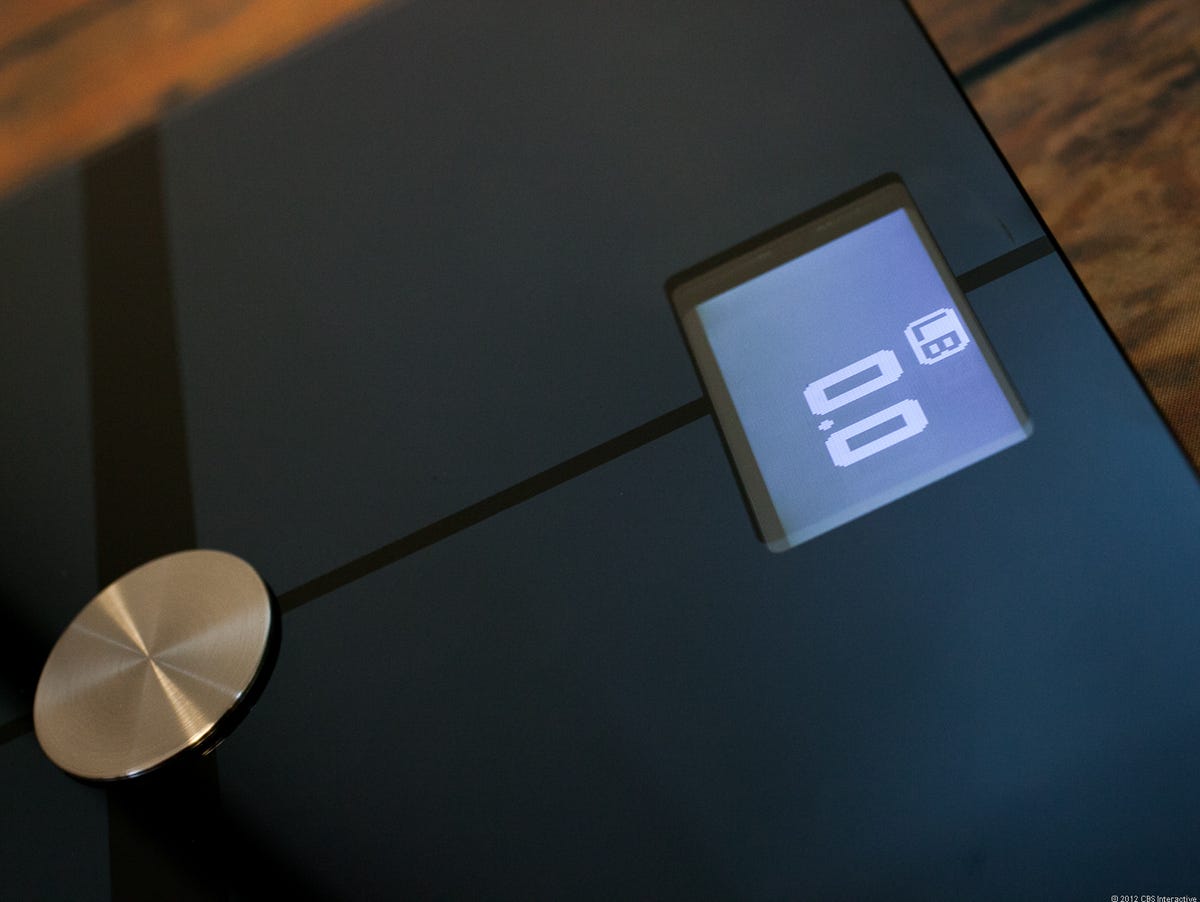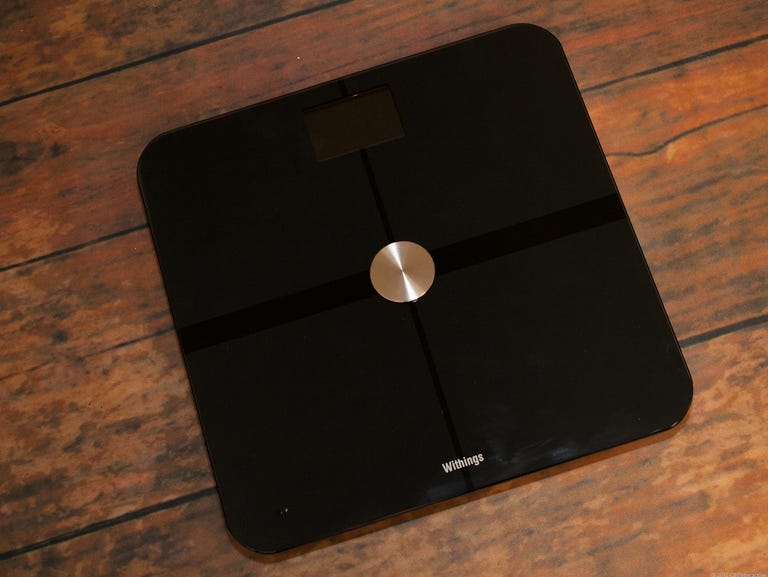 Why You Can Trust CNET
Why You Can Trust CNET Withings Wi-Fi Digital Body Scale review: Withings Wi-Fi Digital Body Scale
The once undisputed king of household hi-tech Wi-Fi scales can still hold its own.
Back in September 2009, the $159 Withings Body Scale represented the ultimate in household personal weight recording. It tracks your weight, BMI, and percentage body fat over time and is compatible with a slew of Web-based fitness services -- all still laudable skills.
The Good
The Bad
The Bottom Line
That said, newcomers such as the Fitbit Aria plan to give the Body Scale a run for its money with a host of simple yet powerful analysis tools that live in the cloud. Still, the Withings Body Scale offers plenty of flexibility for those who haven't bought into the Fitbit ecosystem.
Design
Unlike HDTVs or smartphones, bathroom scales aren't known for inspiring gadget envy. If you saw the Withings Body Scale, though, perhaps you'd change your tune. Flat, square, and with sleek rounded corners, the Body Scale sports an all black platform constructed from smooth glass. It's an attractive aesthetic which has the look of an iPod Touch, or other fancy consumer electronics gadgets.
The platform measures 12.6 inches by 12.6 inches and sits 0.9 inch above the floor. That's lower to the ground than the Body Scale's main competitor, the Fitbit Aria. Even so, the Aria boasts better all-around style and is crafted with more care and sophistication. For example, the Aria is slightly smaller (12.3 inches by 12.3 inches) and almost a full pound lighter than the 5.1-pound Body Scale. I also prefer the Aria's LCD screen, which is framed by an attractive silver ring, to the Body Scale's display that's merely recessed below the platform. I also have no idea why Withings placed a flat silver disc smack-dab in the center of the platform since it doesn't seem to serve any purpose.

Molded from plastic with a silver paint job, perhaps another nod to Apple, the back side of the Withings Body Scale is rather tame. Four plastic risers prop the scale off of the ground but don't provide a firm grip like the rubber feet on the Aria. They also loosely rattle around in their sockets. Also disconcerting is how the Body Scale's flat back flexes visibly when I applied pressure to it with my fingers. Not only is the Fitbit Aria's bubblelike bottom more stable, it looks more striking, too.
A thin battery cover conceals the device's power supply, four AAA batteries. Also located here is a switch to set the scale's digital readout to kilograms, stone, or pounds.
Features
When stacked up against the more recent Fitbit Aria, the features of the Withings Body Scale are definitely less advanced. Aside from calculating your weight, the scale uses the same technique as the Aria to measure your body fat percentage. When you step onto the device, electrodes in the scale's platform send a small electrical current into your body. The gadget then uses the resulting stat, called biometric impedance, to assess your personal composition of lean mass to fat. For this reason, Withings states that people who use pacemakers should never step onto its product.
The Body Scale also has the brains to differentiate between between eight individuals. But unlike Fitbits Aria, there doesn't appear to be an easy way to accomplish this task. In fact, I found the entire Withings Web-based interface for the Body Scale confusing and unintuitive. It turns out you can quickly add users to the scale by clicking the Unassigned Data button on the Web site dashboard -- that's far from obvious, though. Also, while Withings offers both iOS and Android apps to view your weight and BMI over time, they are simplistic and don't provide much more in the way of features and capabilities.
For example, the Fitbit Aria ties into Fitbit's tailor-made ecosystem of fitness products and software tools. With them I was able to track my activity using the company's Fitbit Ultra pedometer, count calories by entering meals and snacks (either through mobile apps or Web browser), and create a custom weight-loss plan, all through Fitbit's seamless, graphically engaging interface. Withings says that it plans on performing a major software update within the next month that will add significantly greater functionality.
On the other hand, the Withings Body Scale beats the Aria in terms of sheer support for third-party fitness apps and services. The company says the scale is compatible with 44 separate health-oriented software and Web solutions including Runkeeper and even Fitbit. One caveat is that the device will populate those fitness platforms with your weight data but won't pull that info into the Withings dashboard so you can view everything in one spot.
Performance
Testing the Withings Body Scale was an enjoyable if not completely straightforward experience. Setting up the device was simply a matter of downloading the scale's software from Withing's Web site then connecting the product via USB cable (Mini to standard) to my Wi-Fi-connected PC -- Macs are also supported. From there I instructed the Body Scale to link to my network, unplugged the cable, and I was off to the races. It is a drawback to have to use a physical cord, since you may not always have one handy. The entire process was quick and relatively painless, though.
In terms of performance, the Body Scale turned in essentially the same alarming results the Fitbit Aria recorded. The scale did measure my weight as being a few pounds lighter, but sadly it reported a slightly higher BMI reading. Weight logging was just as simple and swift on the Body Scale as it was using the Aria. After stepping on the device, the gadget took a few seconds to measure my weight and percentage body fat. A few more seconds more and the scale informed me that my stats were uploaded to my Withings account located in the cloud.
Conclusion
First debuted back in September 2009, the $159 Withings Body Scale set the bar for what a Wi-Fi-connected scale should do. Stylish and sophisticated, the device still offers a great way to track your weight over time to motivate you toward your weight-loss goals. Stiff competition from the $129.99 Fitbit Aria though has exposed the Body Scale's less-than-ideal software interface and online tools. That said, if you don't want to invest in Fitbit's growing world of fitness devices and want an extremely flexible smart device, the Withings Body Scale just may satisfy your specific needs.


